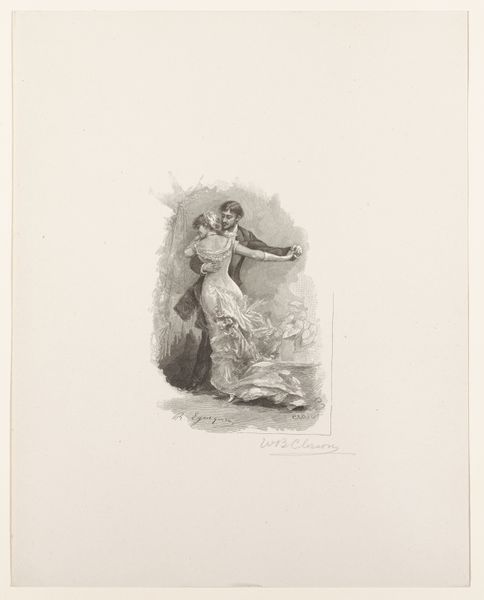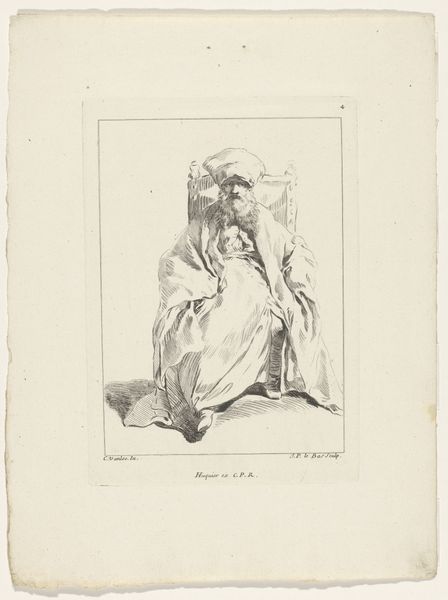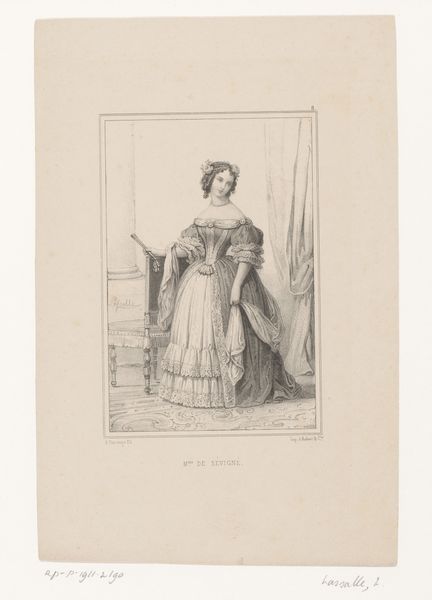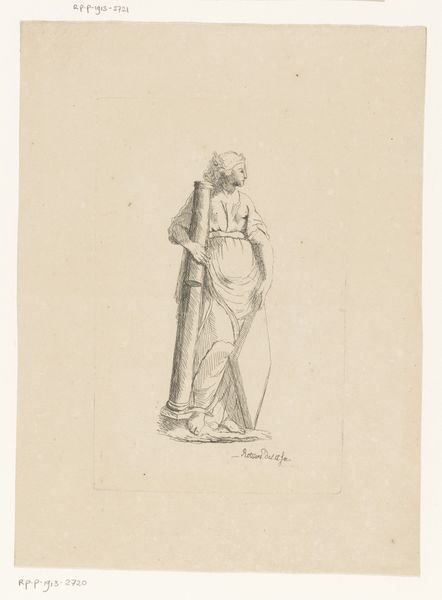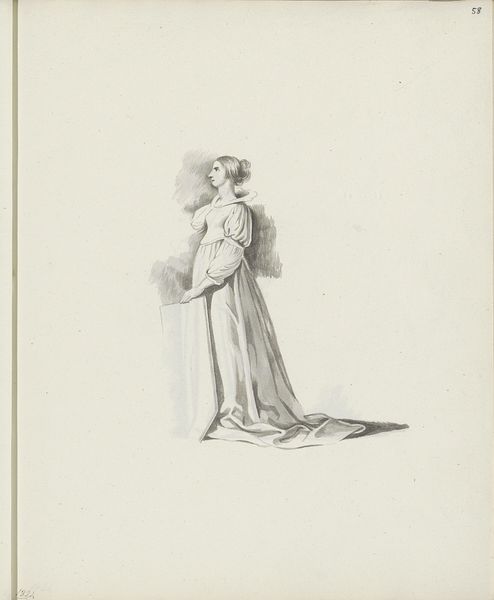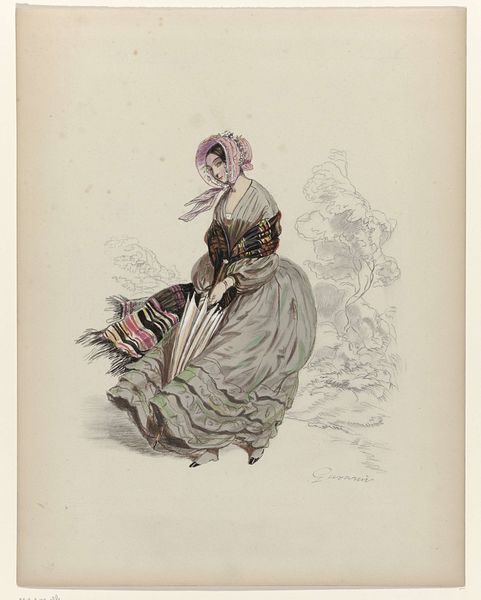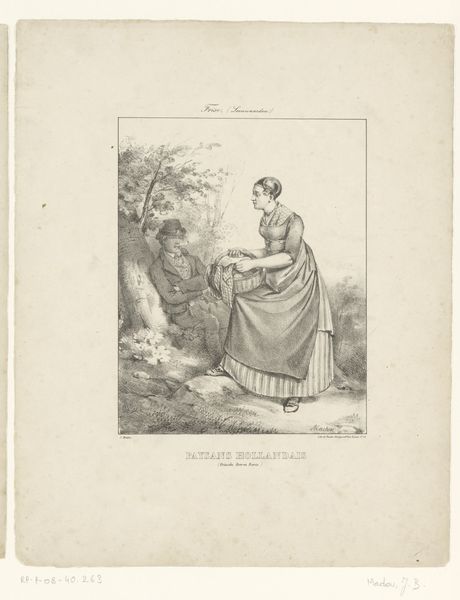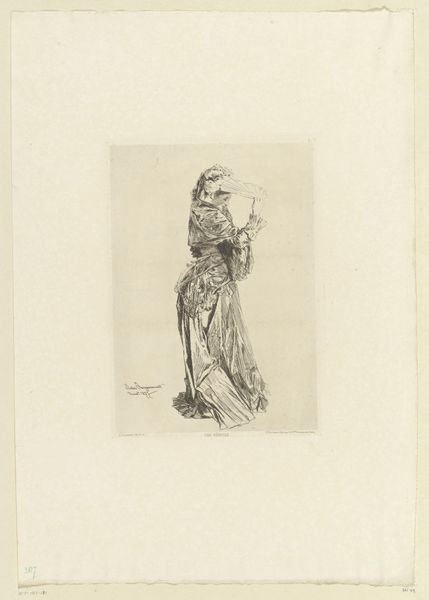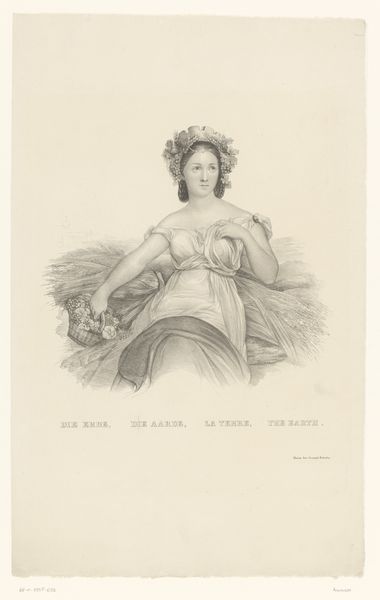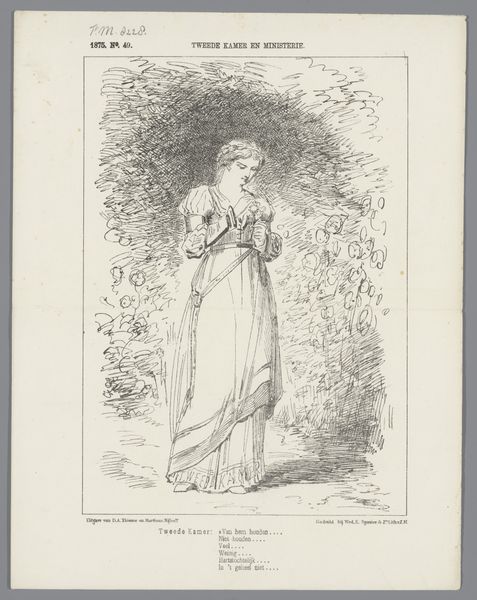
#
portrait
# print
#
figuration
#
academic-art
#
watercolor
Dimensions: height 312 mm, width 234 mm
Copyright: Rijks Museum: Open Domain
Curator: Here we have Hippolyte-Louis-Emile Pauquet’s 1864 print, "Courtisane, 1491." A striking title, referencing both profession and historical period, wouldn’t you say? What impressions strike you first? Editor: She looks like a figure from a faded tapestry, all delicate lines and muted color. There’s a gentle sadness, almost resignation, in her eyes. Is she really that removed from the romanticism we ascribe to the Renaissance? I’m finding her profoundly relatable, maybe due to the limited palette and almost watercolor-like application of ink. Curator: Ah, relatable ennui across the ages! Pauquet based his work on actual historical figures, or rather, representations thereof. I wonder about the original artisan and the process of knowledge translation embedded within this work? A historical document, perhaps, or is the materiality pointing us at an echo of power relationships? Editor: The clothing dominates, really; the bulk of that ochre-toned dress against the violet floor and subtle backdrop of drapery. Is Pauquet pointing us towards the power inherent in dressmaking? Curator: Maybe, the folds do look so soft I feel like they'd pour right through my fingers like butter. What makes a textile historic anyway? Time is of course, an undeniable agent; it fades, it frays, it changes textures. But what were those clothes really made from, how much labour was dedicated to its construction, and who made it? The artist seems so interested in recreating clothing from another era, but the original garments likely weren't available to view at all. It points to this odd tension in the art making process, right? Editor: Exactly, a dance of creation and loss! It strikes me how academic it is to reduce this individual woman into being defined only as 'Courtisane.' Did Pauquet stop and think about her name, family or interests? Curator: A vital reminder to engage beyond reductive categorizations of art as portrait, and also of the woman. How much freedom does she have when even the picture is more concerned with her job than with her life! Editor: I’m seeing so many interesting contradictions within this seemingly traditional representation. I came in seeing a fading melancholy; I'm walking away questioning how historical art actually contributes to a greater history.
Comments
No comments
Be the first to comment and join the conversation on the ultimate creative platform.
